Disclaimer: This post may contain Amazon affiliate links. Sudachi earns a small percentage from qualifying purchases at no extra cost to you. See disclaimer for more info.
What is Tuna Mayo Onigiri?
Anyone who has been to a convenience store or supermarket in Japan and looked at the selection of rice balls might have been puzzled by the “sea chicken” onigiri (シーチキンおにぎり).
Tuna Mayo Onigiri (ツナマヨおにぎり) is a classic and beloved variation of onigiri commonly found in Japanese convenience stores. The filling for this onigiri is a simple yet delicious combination of canned tuna mixed with mayonnaise.
The creation of Tuna Mayo Onigiri is attributed to a product development manager at Seven Eleven, who was inspired by watching his son enjoy tuna mixed with mayonnaise. Finding the combination irresistibly tasty, he decided to commercialize it.
This decision led to the birth of Tuna Mayonnaise Onigiri, which has since become a staple in convenience stores across Japan. It’s a standard onigiri variety and one of the top-selling onigiri flavors, loved for its creamy, savory taste and convenient packaging.
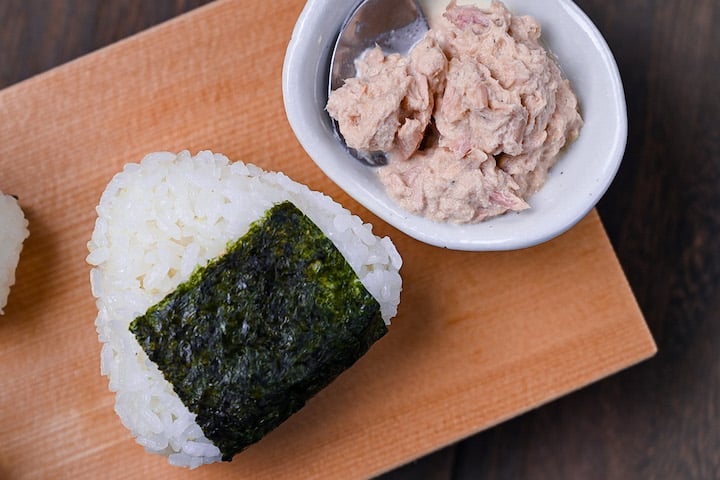

How I Developed This Recipe
In developing this recipe for tuna mayo onigiri, my initial focus was on replicating the familiar taste that people love from convenience store versions, as this is often the benchmark for many.
However, I also wanted to infuse the essence of home cooking into it, striking a balance between the classic convenience store flavor and the wholesome goodness of a homemade dish.
The challenge was to maintain the comforting, slightly “junky” flavor that makes convenience store onigiri so appealing while also adding a touch of homemade care and quality. This meant carefully adjusting the tuna and mayonnaise ratio and perhaps adding a few extra ingredients to elevate the flavor while keeping it simple and true to the essence of this beloved snack!
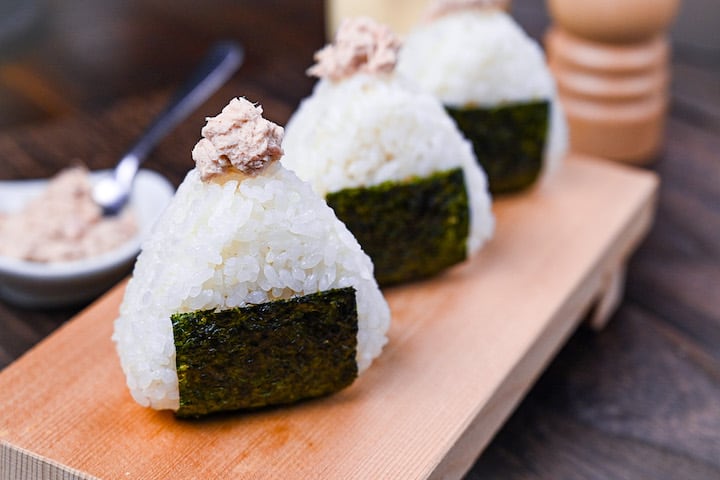
Ingredients & Substitution Ideas
- Cooked Japanese Short-Grain Rice: Must-item for any onigiris. Other types of rice will not work. Check my How to Cook Japanese Rice Recipe for recommended brands in the U.S. and cooking tips.
- Sushi Nori Seaweeds: Essential for wrapping onigiri (rice balls). It’s not complete without nori.
- Canned Tuna: Ensure to use canned tuna in oil for the best result.
- Japanese Mayonnaise: Kewpie mayonnaise is ideal, but other brands work well too.
- Soy Sauce: I recommend Kikkoman soy sauce for affordability. For more details on selecting soy sauce, see my soy sauce guide.
- Black Pepper: Just use your regular black pepper.
Curious about the exact brands and products that bring my recipes to life? Discover the brands and ingredients behind my recipes at the Sudachi Amazon Storefront. Explore my handpicked pantry essentials and find your next kitchen favorites!
Jump to Full Recipe Measurements
Visual Walkthrough & Tips
Here are my step-by-step instructions for how to make Tuna Mayo Onigiri at home. For ingredient quantities and simplified instructions, scroll down for the Printable Recipe Card below.
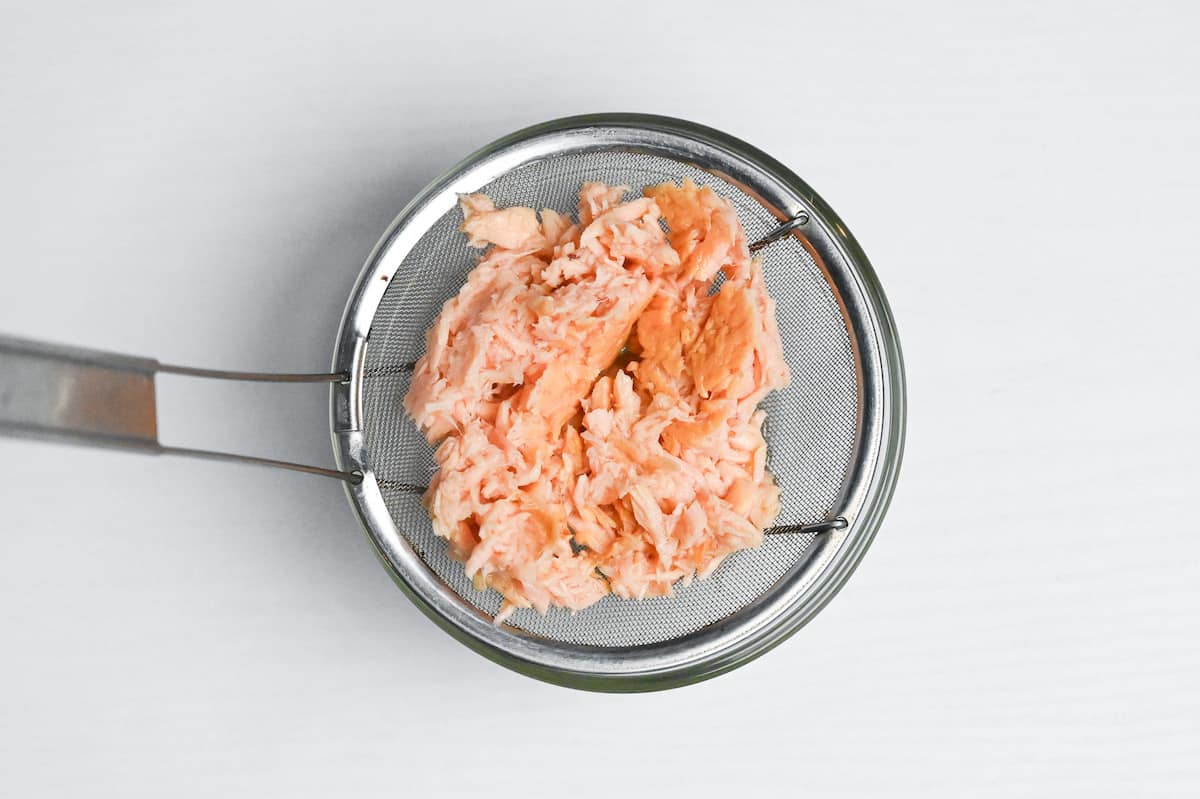
First, place a colander or sieve over a bowl. Take canned tuna and squeeze out the excess liquid. This step ensures that your filling isn’t too wet. Wet fillings tend to leak into the rice and make the onigiri fall apart, something we would rather avoid!
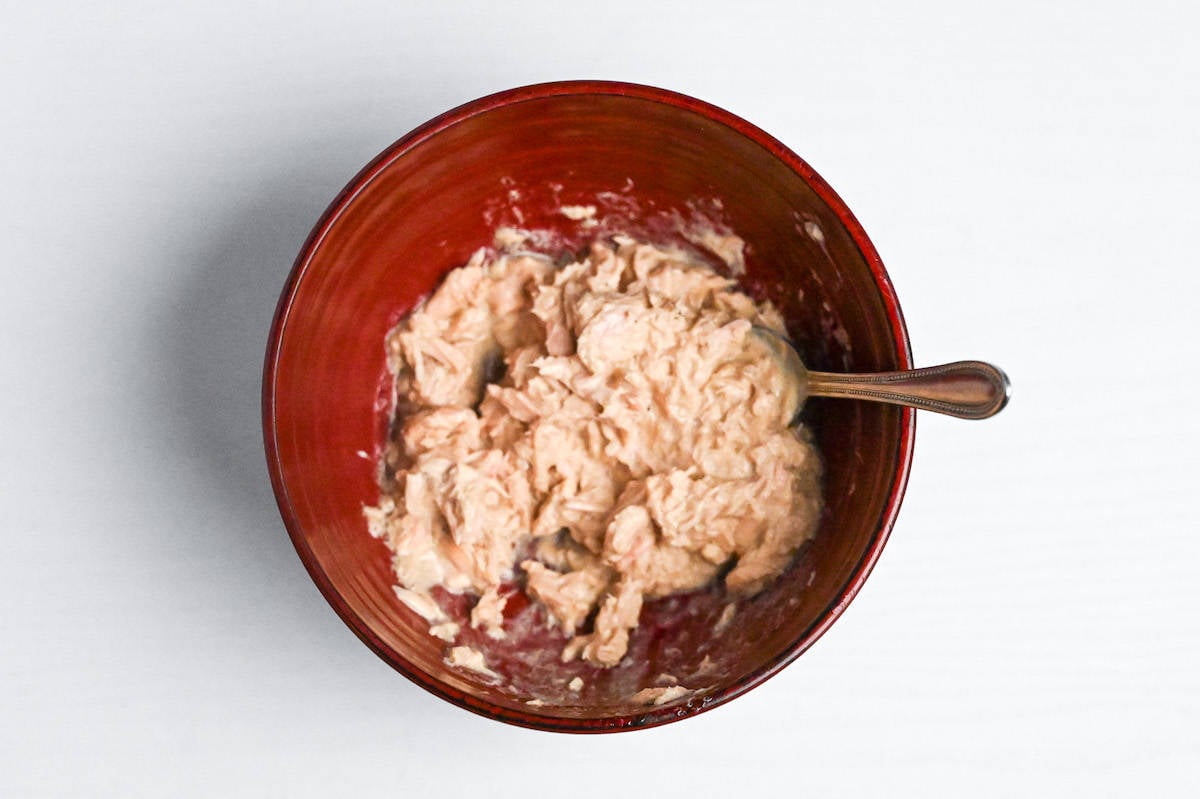
After draining, put the tuna in a bowl. Mix it with Japanese mayonnaise, soy sauce, and black pepper. This combination gives a deliciously creamy and flavorful filling.
Now, sprinkle your onigiri mold with a bit of salt. This adds a subtle flavor to the rice. Add about 50-60 grams of rice into the mold, which is half the amount of rice you will need for each portion, and make a small dent in the middle for the filling.
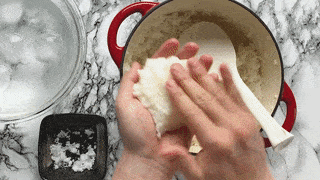
If you’re shaping by hand, wet your hands with cold water and sprinkle them with salt. This prevents sticking. Then take double the amount of rice (the full amount for a portion) and flatten it on your palm before adding the filling.

If using a mold, spoon the tuna mayo mixture into the dent you’ve made in the rice.
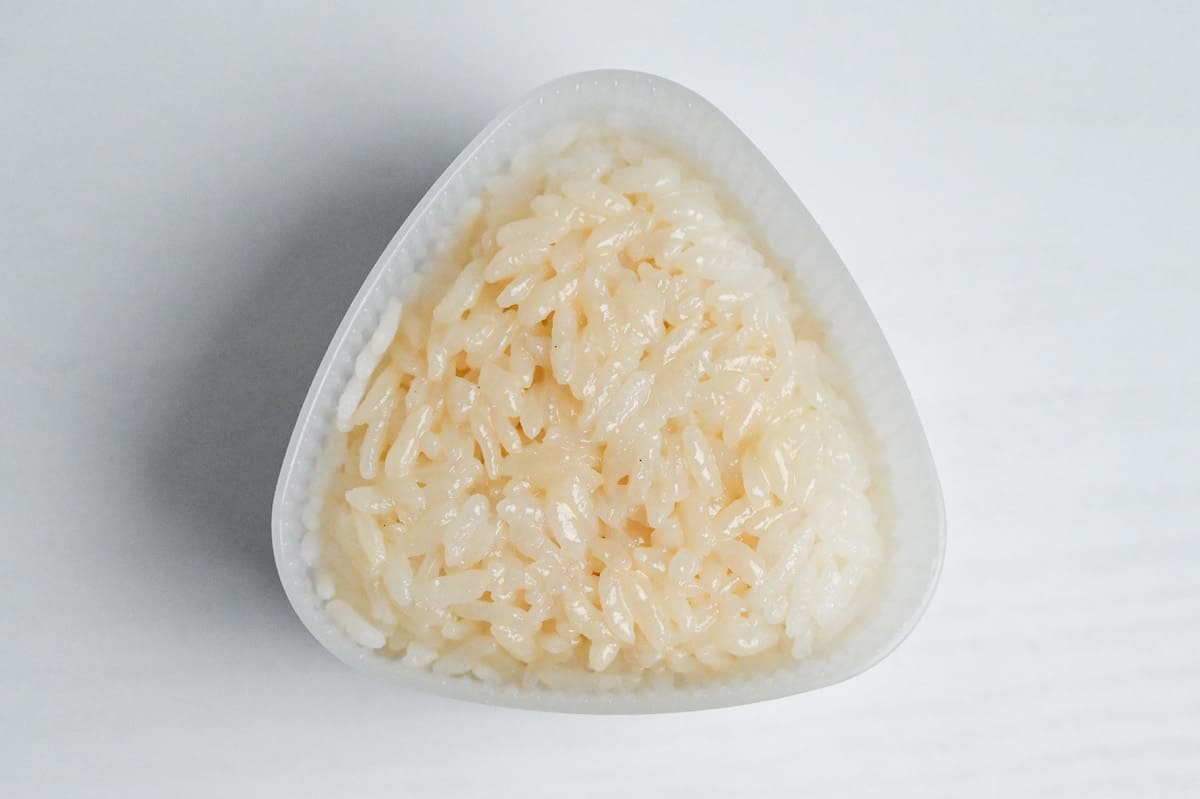
Top the filling with more rice. Use the lid of the onigiri mold to press it down firmly. If you’re shaping by hand, gently fold the rice over to encase the filling. Then, use your folded palm to shape the rice into a triangle. This method keeps the filling snugly inside.
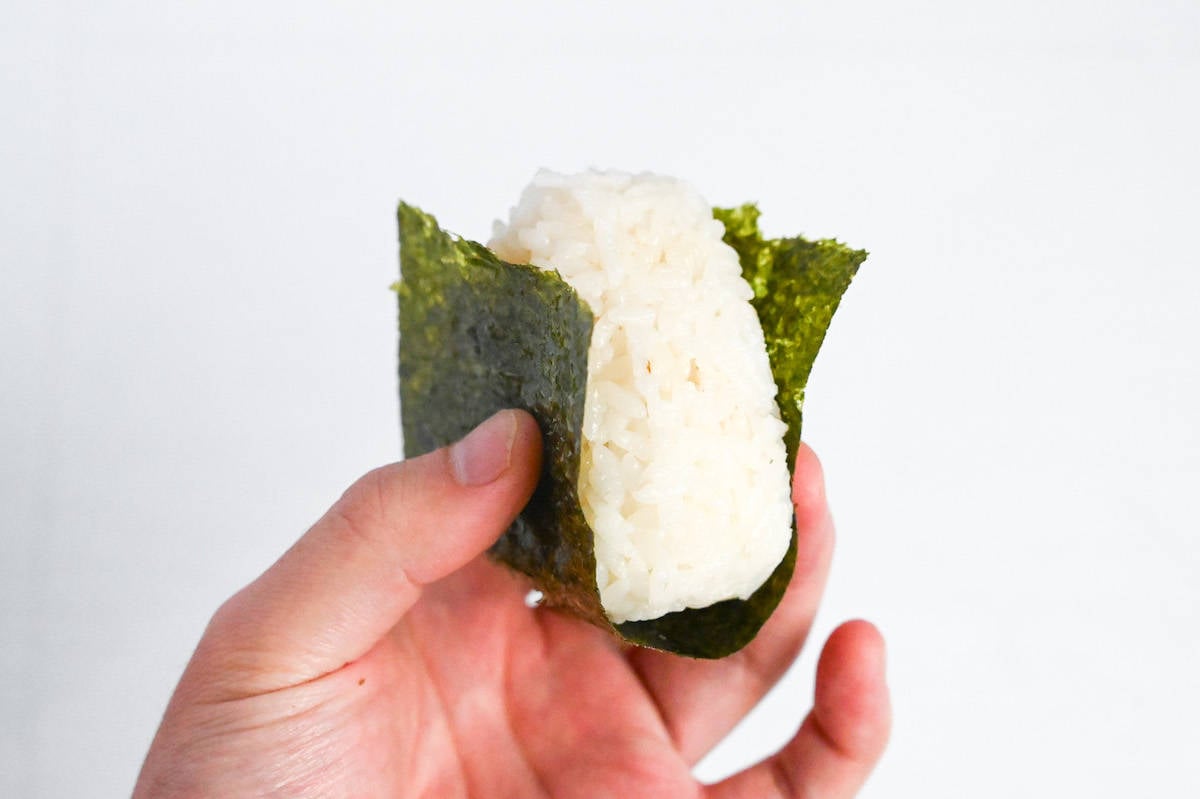
Finally, wrap each onigiri with a strip of nori. The nori adds a nice crunch and a savory sea flavor. Enjoy your onigiri fresh, as a quick snack or a delicious part of your meal!
Jump to Full Recipe Measurements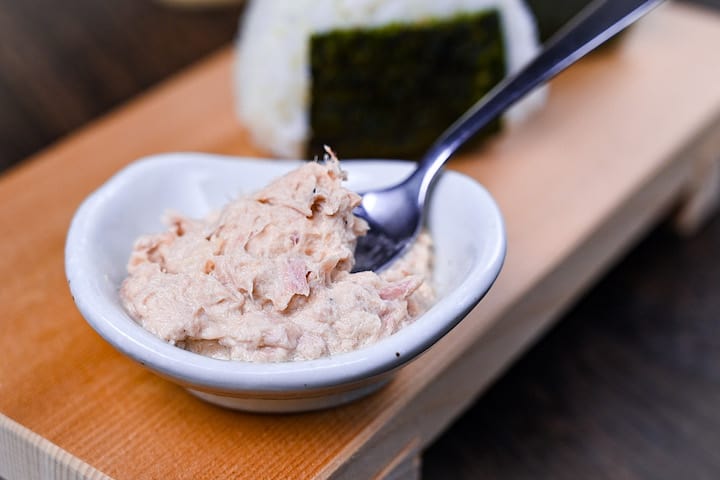
Storing onigiri
Onigiri is best enjoyed fresh on the day it’s made. However, for leftovers or convenience, wrap them in plastic without nori and freeze them. To eat, microwave the onigiri for defrosting and add nori just before consumption for a fresh feel.
Use an icepack in your lunchbox for school or work lunches to maintain onigiri freshness until mealtime.
Storing onigiri in the fridge is not advisable, as the rice hardens and nori softens, impacting the texture and taste.
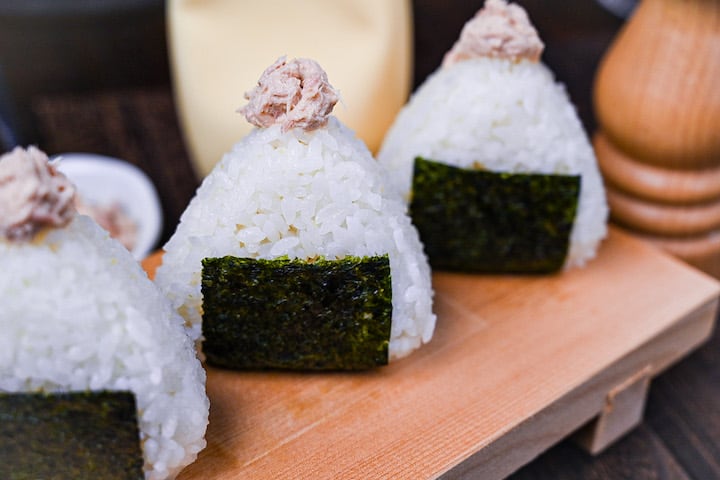
I hope you enjoy this Tuna Mayo Onigiri recipe! If you try it out, I’d really appreciate it if you could spare a moment to let me know what you thought by giving a review and star rating in the comments below. It’s also helpful to share any adjustments you made to the recipe with our other readers. Thank you!
More Onigiri Recipes
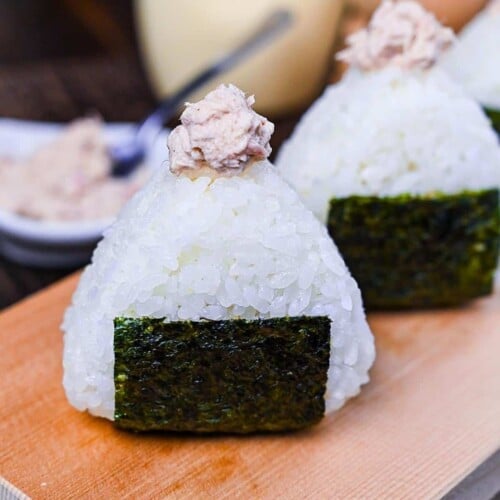
Tuna Mayo Onigiri
Equipment
Ingredients
- 700 g cooked Japanese short-grain rice see how to cook Japanese style rice here
- 80 g canned tuna
- 1 tbsp Japanese style mayonnaise
- 1 tsp soy sauce
- 1 pinch ground black pepper
- 2-3 sheets sushi nori seaweed nori, cut into strips
Instructions
- Place a colander or sieve over a bowl and squeeze the excess liquid out of 80 g canned tuna.

- Pour away the liquid and place the tuna into a bowl. Mix with 1 tbsp Japanese style mayonnaise, 1 tsp soy sauce and 1 pinch ground black pepper.

- Sprinkle the onigiri mold with salt and place about 50-60g of rice inside. Make a dent in the middle and add about 2 tsp of tuna mayo filling. (If shaping by hand, wet your hands with cold water and sprinkle with salt. Take 100-120g of rice and press it flat before placing the filling in the middle.)

- Top with an equal amount of rice and press it using the lid of the onigiri mold.

- If shaping by hand, fold the rice over to seal the filling and use your folded palm to press the rice into a triangle shape

- Wrap each onigiri with nori and enjoy!

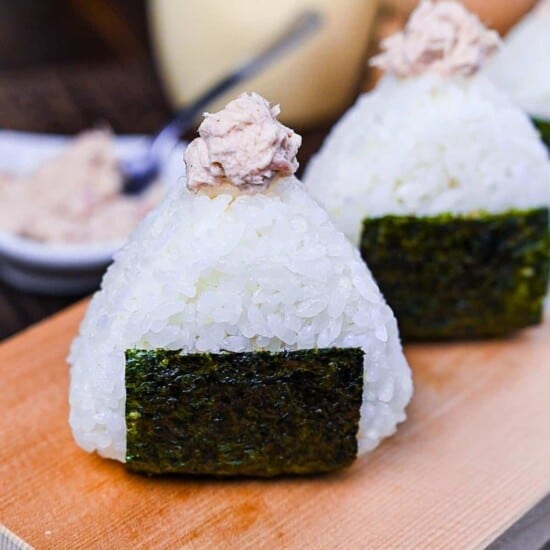


Leave a rating and a comment